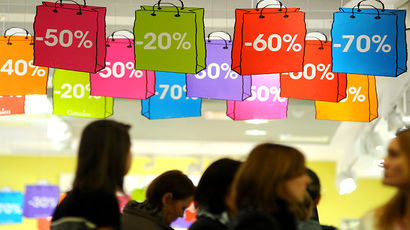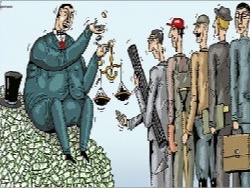In June, the average nominal salary in Russia grew by 9%, to 38.6 thousand rubles

Rosstat and the government report: in recent months, rising wages and in nominal and real terms. Analysts suggest that wage growth could occur by increasing the rate of growth of income best paying part of the population. This means that a quick recovery in consumer demand can be expected.
According to Rosstat, in June the average gross salary in the country amounted to 38 590 RUB is 9% more than in June last year. Over half of the growth was 7.8%. In real terms (adjusted for inflation) Federal state statistics service recorded a zero increase in wages.
Commenting on the half year results, the Minister of labour and social development Maxim Topilin said that “in recent months we have seen a positive trend — a gradual increase in real wages”.
In the first half of the year, real wages stabilized at the same period of 2015. A year ago the situation was significantly worse in the first half of last year, real wages declined by 8.8% compared to the first half of 2014.
“This suggests that businesses and organizations are gradually emerging from “salary” crisis and find the funds for material incentives for workers” — summed up Maxim Topilin.

The Russians are having a hard time
Because of the crisis, the Russians don’t indulge in “small gastronomic pleasures. Over the past year they have significantly reduced the cost of buying… →
Earlier in interview “Газете.Ru” the Minister of economic development Alexei Ulyukayev said that nominal wages since March, resumed growth. Analysts believe that in the second half of the salaries will continue to grow.
“In the second half of 2016 is expected to slow the annual inflation rate. If at the end of June she was at the level of 7.5% by the end of the year, according to forecasts, inflation is expected to be 6,0–6,3%. This will support the annual dynamics of real wages, which should grow in the second half of 2016. This factor will have a positive impact on the statistics of the retail trade in the second half of 2016”, — said analysts of Sberbank CIB.
Inflation may be for the year and below: the Bank of Russia expects it at the level of 5-6%. As for consumer demand, while in the first half of this year retail trade turnover continued to fall, decreasing to the same period in 2015 by 5.7%, and June to June fell 5.9%.
The Russians are still in saving mode, sociologists and analysts. Wage growth should stimulate the population to increase purchases. But the question is, whereby in the first half of the year occurred this growth.
The analysts of “VTB Capital” put forward three hypotheses. First, it can be the bonuses that were paid to the management and employees in the first half. Second, the increase may be statistical error, which will then be eliminated.
The most interesting is the third version. Salaries increased due to the increase in the growth rate of income best paying part of the population, analysts say, “VTB Capital”.
They, in particular, noted that, historically, the dynamics of retail trade turnover and real wages were closely linked. However, this year the rate of growth of real wages exceeded the zero mark in February and since then (with the exception of April) remains positive, while the retail trade turnover continued to decline yoy and the decrease in June, only slightly slowed down.
“One of the reasons for this gap in the dynamics could be growth income better paying part of the population tend to increase saving, not spending.
This is also evidenced by the fact that, according to the Bank of Russia, in may the total volume of ruble deposits increased by 15.7% year-on-year,” according to a survey of analysts.
If analysts are correct in their assumptions, the wage growth may be somewhat reduced in the future, but retail trade turnover in the best case will go to zero in the second half.

Discounts as a strategy to save
Rosstat continues to record a fall in retail turnover in 2016. In may, he declined 6.1%. At the same time. →
A negative contribution is made by the state. The Finance Ministry pushed through the government policy of fiscal consolidation, which calls for a freeze and reduction of costs. This year they are expected to reach 15,78 trillion as against 16.1 trillion budgeted. The public sector wages are not indexed, and retired in February increased payments by 4%, while inflation by the end of 2015 was 12.9%.
It should be noted that the companies (unlike the government) there are opportunities for higher wages. In the past year, wages in real terms fell by 9%, but domestic companies have record profits. Balanced financial result (profit minus loss) of organizations (excluding small businesses, banks, insurance organizations and budget institutions) in current prices amounted to 8,422 trillion rubles, which is 53% more than in 2014. For the year 39.6 thousand organisations have got profit of $ 11,254 trillion and 15.4 thousand organisations had a loss in the amount 2,832 trillion rubles.
But do not hurry to compensate workers for inflationary losses. As well as not in a hurry to get out of the investment pause. In General, the behavior is similar to the survival strategy of the population less to spend, more to save. When will be scrapped this trend is not yet clear.








